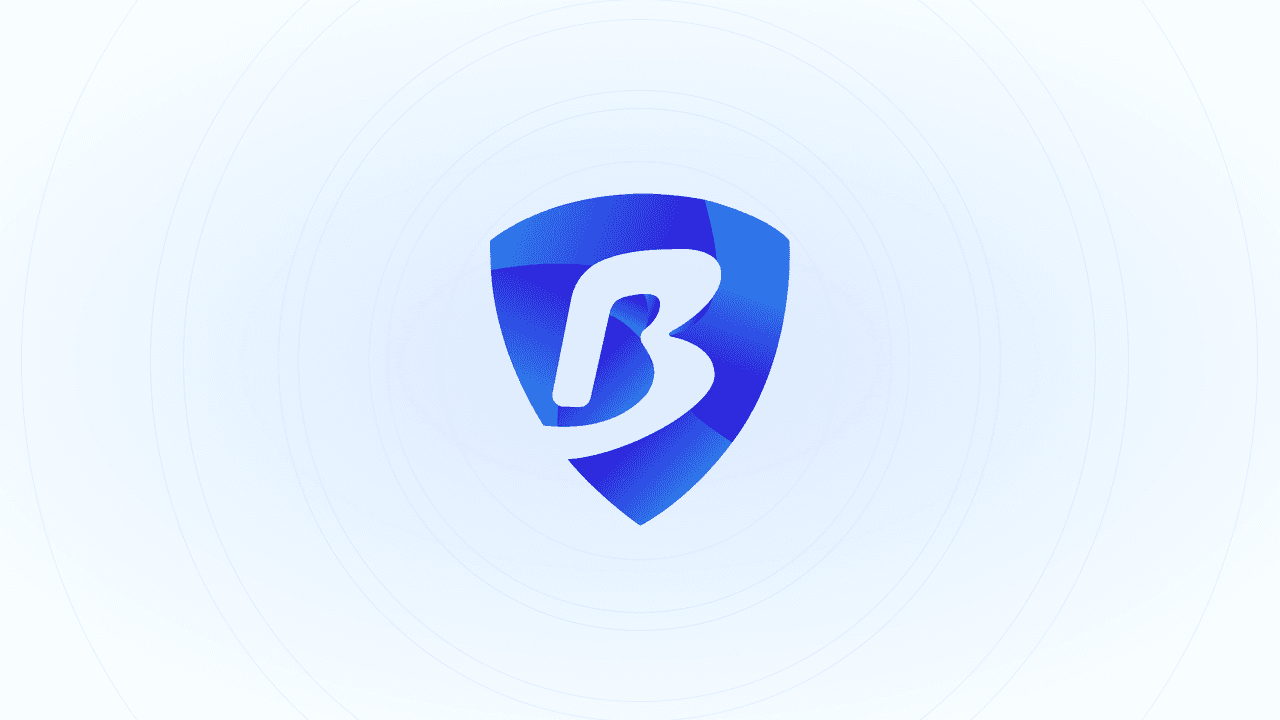Proxy Rotation: Secret Weapon Against IP Bans




David Foster
Proxy Basics
Proxy Rotation: Your Secret Weapon Against IP Bans and Data Collection Roadblocks
In the fast-paced world of data intelligence and web scraping, hitting roadblocks can be frustrating and costly. Whether you're dealing with IP bans, geo-restrictions, or rate limiting, these obstacles can seriously hinder your data collection efforts. But what if there was a way to sidestep these issues and keep your projects running smoothly? Enter proxy rotation – a powerful technique that's changing the game for businesses and data professionals alike.
What is Proxy Rotation and Why Does it Matter?
Proxy rotation is the practice of cycling through different IP addresses when making requests to a target website or API. Instead of using a single IP address for all your requests, you're essentially putting on a new digital "mask" with each connection. This approach offers several key benefits:
Avoiding IP bans and blocks
Bypassing rate limiting
Accessing geo-restricted content
Improving anonymity and privacy
Enhancing the reliability of your data collection
For businesses engaged in competitive intelligence, market research, or large-scale data aggregation, proxy rotation isn't just a nice-to-have – it's often a necessity. Without it, you're likely to run into walls that can bring your projects to a screeching halt.
The Mechanics of Proxy Rotation: How Does it Work?
At its core, proxy rotation is a fairly simple concept. Instead of connecting directly to a target website, your requests are routed through an intermediary server (the proxy). This proxy then forwards your request to the target site, making it appear as though the request is coming from the proxy's IP address rather than your own.
Where rotation comes into play is in the use of multiple proxy servers. Each time you make a request, the system selects a different proxy from a pool of available IPs. This can happen in a few different ways:
Round-robin: Cycling through a list of proxies in order
Random selection: Choosing a proxy at random for each request
Smart rotation: Using algorithms to select the most appropriate proxy based on factors like performance, location, or previous success rates
The result? A series of requests that appear to come from different sources, making it much harder for target sites to detect and block your activity.
Types of Proxies: Choosing the Right Tool for the Job
Not all proxies are created equal, and the type you choose can have a significant impact on the success of your projects. Here are the main categories to consider:
Residential Proxies
These are IP addresses assigned to real residential devices, making them appear highly legitimate to most websites. They're excellent for accessing location-specific content or bypassing strict anti-bot measures. However, they tend to be more expensive due to their high quality.
Datacenter Proxies
These are IP addresses from cloud providers and data centers. They're typically faster and cheaper than residential proxies, but may be more easily detected by sophisticated websites. They're great for high-volume tasks where speed is a priority.
Mobile Proxies
As the name suggests, these proxies use IP addresses from mobile devices. They're particularly useful for accessing mobile-specific content or apps, and can be very effective for certain types of data collection.
At Evomi, we offer all three types of proxies, each with its own strengths and ideal use cases. Our residential and mobile proxies start at $2.15 per GB, while our datacenter proxies are available from just $0.35 per GB, making them an cost-effective option for many projects.
Implementing Proxy Rotation: Best Practices and Pitfalls
While proxy rotation can be a powerful tool, it's important to implement it correctly to get the best results. Here are some key considerations:
Rotation Frequency
How often should you rotate your proxies? It depends on your specific use case. For some projects, changing IPs with every request might be overkill and could even raise suspicions. In other cases, frequent rotation might be necessary to avoid detection. It's about finding the right balance for your particular needs.
Proxy Pool Size
The size of your proxy pool matters. Too small, and you risk reusing IPs too frequently. Too large, and you might be paying for more than you need. Consider your request volume and rotation frequency when determining the optimal pool size.
Geolocation
If you're accessing geo-restricted content, make sure your proxy pool includes IPs from the relevant locations. At Evomi, we offer extensive customization options to ensure you're getting the right mix of proxies for your needs.
Request Patterns
Even with proxy rotation, it's important to mimic human-like behavior in your requests. This includes varying the timing between requests, using appropriate user agents, and respecting robots.txt files.
The Legal and Ethical Considerations of Proxy Usage
While proxy rotation is a powerful tool, it's crucial to use it responsibly and ethically. Here are some important points to keep in mind:
Always respect the terms of service of the websites you're accessing
Be mindful of the load you're placing on target servers
Ensure you have the right to collect and use the data you're gathering
Consider the potential impact on the individuals or businesses whose data you're collecting
At Evomi, we're committed to ethical data collection practices. We provide the tools, but it's up to our users to employ them responsibly. If you're unsure about the legality or ethics of a particular use case, it's always best to consult with a legal professional.
Conclusion: Empowering Your Data Collection Efforts
Proxy rotation is more than just a technical trick – it's a fundamental strategy for successful data collection in today's digital landscape. By leveraging the power of rotating IPs, you can overcome many of the obstacles that stand in the way of your data intelligence goals.
Whether you're conducting market research, monitoring competitors, or aggregating data for machine learning models, the right proxy rotation strategy can make all the difference. It's about staying one step ahead, ensuring the reliability of your data, and opening up new possibilities for your business.
At Evomi, we're proud to offer a range of proxy solutions to suit various needs and budgets. From our high-quality residential and mobile proxies to our cost-effective datacenter options, we've got you covered. And with our free trial, you can experience the power of proxy rotation for yourself without any upfront commitment.
Ready to take your data collection efforts to the next level? Check out our pricing and find the perfect plan for your needs. Your data is waiting – let's go get it.
Proxy Rotation: Your Secret Weapon Against IP Bans and Data Collection Roadblocks
In the fast-paced world of data intelligence and web scraping, hitting roadblocks can be frustrating and costly. Whether you're dealing with IP bans, geo-restrictions, or rate limiting, these obstacles can seriously hinder your data collection efforts. But what if there was a way to sidestep these issues and keep your projects running smoothly? Enter proxy rotation – a powerful technique that's changing the game for businesses and data professionals alike.
What is Proxy Rotation and Why Does it Matter?
Proxy rotation is the practice of cycling through different IP addresses when making requests to a target website or API. Instead of using a single IP address for all your requests, you're essentially putting on a new digital "mask" with each connection. This approach offers several key benefits:
Avoiding IP bans and blocks
Bypassing rate limiting
Accessing geo-restricted content
Improving anonymity and privacy
Enhancing the reliability of your data collection
For businesses engaged in competitive intelligence, market research, or large-scale data aggregation, proxy rotation isn't just a nice-to-have – it's often a necessity. Without it, you're likely to run into walls that can bring your projects to a screeching halt.
The Mechanics of Proxy Rotation: How Does it Work?
At its core, proxy rotation is a fairly simple concept. Instead of connecting directly to a target website, your requests are routed through an intermediary server (the proxy). This proxy then forwards your request to the target site, making it appear as though the request is coming from the proxy's IP address rather than your own.
Where rotation comes into play is in the use of multiple proxy servers. Each time you make a request, the system selects a different proxy from a pool of available IPs. This can happen in a few different ways:
Round-robin: Cycling through a list of proxies in order
Random selection: Choosing a proxy at random for each request
Smart rotation: Using algorithms to select the most appropriate proxy based on factors like performance, location, or previous success rates
The result? A series of requests that appear to come from different sources, making it much harder for target sites to detect and block your activity.
Types of Proxies: Choosing the Right Tool for the Job
Not all proxies are created equal, and the type you choose can have a significant impact on the success of your projects. Here are the main categories to consider:
Residential Proxies
These are IP addresses assigned to real residential devices, making them appear highly legitimate to most websites. They're excellent for accessing location-specific content or bypassing strict anti-bot measures. However, they tend to be more expensive due to their high quality.
Datacenter Proxies
These are IP addresses from cloud providers and data centers. They're typically faster and cheaper than residential proxies, but may be more easily detected by sophisticated websites. They're great for high-volume tasks where speed is a priority.
Mobile Proxies
As the name suggests, these proxies use IP addresses from mobile devices. They're particularly useful for accessing mobile-specific content or apps, and can be very effective for certain types of data collection.
At Evomi, we offer all three types of proxies, each with its own strengths and ideal use cases. Our residential and mobile proxies start at $2.15 per GB, while our datacenter proxies are available from just $0.35 per GB, making them an cost-effective option for many projects.
Implementing Proxy Rotation: Best Practices and Pitfalls
While proxy rotation can be a powerful tool, it's important to implement it correctly to get the best results. Here are some key considerations:
Rotation Frequency
How often should you rotate your proxies? It depends on your specific use case. For some projects, changing IPs with every request might be overkill and could even raise suspicions. In other cases, frequent rotation might be necessary to avoid detection. It's about finding the right balance for your particular needs.
Proxy Pool Size
The size of your proxy pool matters. Too small, and you risk reusing IPs too frequently. Too large, and you might be paying for more than you need. Consider your request volume and rotation frequency when determining the optimal pool size.
Geolocation
If you're accessing geo-restricted content, make sure your proxy pool includes IPs from the relevant locations. At Evomi, we offer extensive customization options to ensure you're getting the right mix of proxies for your needs.
Request Patterns
Even with proxy rotation, it's important to mimic human-like behavior in your requests. This includes varying the timing between requests, using appropriate user agents, and respecting robots.txt files.
The Legal and Ethical Considerations of Proxy Usage
While proxy rotation is a powerful tool, it's crucial to use it responsibly and ethically. Here are some important points to keep in mind:
Always respect the terms of service of the websites you're accessing
Be mindful of the load you're placing on target servers
Ensure you have the right to collect and use the data you're gathering
Consider the potential impact on the individuals or businesses whose data you're collecting
At Evomi, we're committed to ethical data collection practices. We provide the tools, but it's up to our users to employ them responsibly. If you're unsure about the legality or ethics of a particular use case, it's always best to consult with a legal professional.
Conclusion: Empowering Your Data Collection Efforts
Proxy rotation is more than just a technical trick – it's a fundamental strategy for successful data collection in today's digital landscape. By leveraging the power of rotating IPs, you can overcome many of the obstacles that stand in the way of your data intelligence goals.
Whether you're conducting market research, monitoring competitors, or aggregating data for machine learning models, the right proxy rotation strategy can make all the difference. It's about staying one step ahead, ensuring the reliability of your data, and opening up new possibilities for your business.
At Evomi, we're proud to offer a range of proxy solutions to suit various needs and budgets. From our high-quality residential and mobile proxies to our cost-effective datacenter options, we've got you covered. And with our free trial, you can experience the power of proxy rotation for yourself without any upfront commitment.
Ready to take your data collection efforts to the next level? Check out our pricing and find the perfect plan for your needs. Your data is waiting – let's go get it.
Proxy Rotation: Your Secret Weapon Against IP Bans and Data Collection Roadblocks
In the fast-paced world of data intelligence and web scraping, hitting roadblocks can be frustrating and costly. Whether you're dealing with IP bans, geo-restrictions, or rate limiting, these obstacles can seriously hinder your data collection efforts. But what if there was a way to sidestep these issues and keep your projects running smoothly? Enter proxy rotation – a powerful technique that's changing the game for businesses and data professionals alike.
What is Proxy Rotation and Why Does it Matter?
Proxy rotation is the practice of cycling through different IP addresses when making requests to a target website or API. Instead of using a single IP address for all your requests, you're essentially putting on a new digital "mask" with each connection. This approach offers several key benefits:
Avoiding IP bans and blocks
Bypassing rate limiting
Accessing geo-restricted content
Improving anonymity and privacy
Enhancing the reliability of your data collection
For businesses engaged in competitive intelligence, market research, or large-scale data aggregation, proxy rotation isn't just a nice-to-have – it's often a necessity. Without it, you're likely to run into walls that can bring your projects to a screeching halt.
The Mechanics of Proxy Rotation: How Does it Work?
At its core, proxy rotation is a fairly simple concept. Instead of connecting directly to a target website, your requests are routed through an intermediary server (the proxy). This proxy then forwards your request to the target site, making it appear as though the request is coming from the proxy's IP address rather than your own.
Where rotation comes into play is in the use of multiple proxy servers. Each time you make a request, the system selects a different proxy from a pool of available IPs. This can happen in a few different ways:
Round-robin: Cycling through a list of proxies in order
Random selection: Choosing a proxy at random for each request
Smart rotation: Using algorithms to select the most appropriate proxy based on factors like performance, location, or previous success rates
The result? A series of requests that appear to come from different sources, making it much harder for target sites to detect and block your activity.
Types of Proxies: Choosing the Right Tool for the Job
Not all proxies are created equal, and the type you choose can have a significant impact on the success of your projects. Here are the main categories to consider:
Residential Proxies
These are IP addresses assigned to real residential devices, making them appear highly legitimate to most websites. They're excellent for accessing location-specific content or bypassing strict anti-bot measures. However, they tend to be more expensive due to their high quality.
Datacenter Proxies
These are IP addresses from cloud providers and data centers. They're typically faster and cheaper than residential proxies, but may be more easily detected by sophisticated websites. They're great for high-volume tasks where speed is a priority.
Mobile Proxies
As the name suggests, these proxies use IP addresses from mobile devices. They're particularly useful for accessing mobile-specific content or apps, and can be very effective for certain types of data collection.
At Evomi, we offer all three types of proxies, each with its own strengths and ideal use cases. Our residential and mobile proxies start at $2.15 per GB, while our datacenter proxies are available from just $0.35 per GB, making them an cost-effective option for many projects.
Implementing Proxy Rotation: Best Practices and Pitfalls
While proxy rotation can be a powerful tool, it's important to implement it correctly to get the best results. Here are some key considerations:
Rotation Frequency
How often should you rotate your proxies? It depends on your specific use case. For some projects, changing IPs with every request might be overkill and could even raise suspicions. In other cases, frequent rotation might be necessary to avoid detection. It's about finding the right balance for your particular needs.
Proxy Pool Size
The size of your proxy pool matters. Too small, and you risk reusing IPs too frequently. Too large, and you might be paying for more than you need. Consider your request volume and rotation frequency when determining the optimal pool size.
Geolocation
If you're accessing geo-restricted content, make sure your proxy pool includes IPs from the relevant locations. At Evomi, we offer extensive customization options to ensure you're getting the right mix of proxies for your needs.
Request Patterns
Even with proxy rotation, it's important to mimic human-like behavior in your requests. This includes varying the timing between requests, using appropriate user agents, and respecting robots.txt files.
The Legal and Ethical Considerations of Proxy Usage
While proxy rotation is a powerful tool, it's crucial to use it responsibly and ethically. Here are some important points to keep in mind:
Always respect the terms of service of the websites you're accessing
Be mindful of the load you're placing on target servers
Ensure you have the right to collect and use the data you're gathering
Consider the potential impact on the individuals or businesses whose data you're collecting
At Evomi, we're committed to ethical data collection practices. We provide the tools, but it's up to our users to employ them responsibly. If you're unsure about the legality or ethics of a particular use case, it's always best to consult with a legal professional.
Conclusion: Empowering Your Data Collection Efforts
Proxy rotation is more than just a technical trick – it's a fundamental strategy for successful data collection in today's digital landscape. By leveraging the power of rotating IPs, you can overcome many of the obstacles that stand in the way of your data intelligence goals.
Whether you're conducting market research, monitoring competitors, or aggregating data for machine learning models, the right proxy rotation strategy can make all the difference. It's about staying one step ahead, ensuring the reliability of your data, and opening up new possibilities for your business.
At Evomi, we're proud to offer a range of proxy solutions to suit various needs and budgets. From our high-quality residential and mobile proxies to our cost-effective datacenter options, we've got you covered. And with our free trial, you can experience the power of proxy rotation for yourself without any upfront commitment.
Ready to take your data collection efforts to the next level? Check out our pricing and find the perfect plan for your needs. Your data is waiting – let's go get it.

Author
David Foster
Proxy & Network Security Analyst
About Author
David is an expert in network security, web scraping, and proxy technologies, helping businesses optimize data extraction while maintaining privacy and efficiency. With a deep understanding of residential, datacenter, and rotating proxies, he explores how proxies enhance cybersecurity, bypass geo-restrictions, and power large-scale web scraping. David’s insights help businesses and developers choose the right proxy solutions for SEO monitoring, competitive intelligence, and anonymous browsing.





